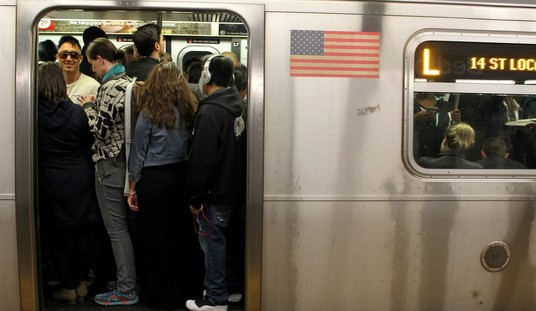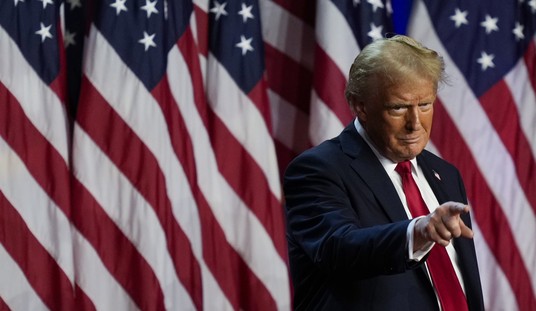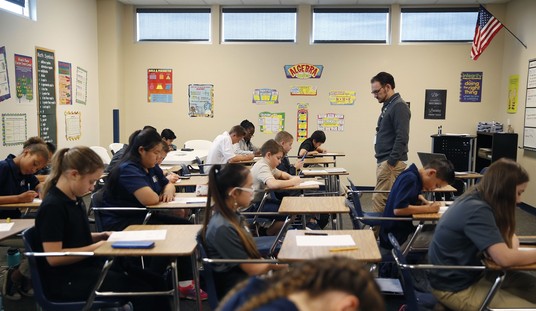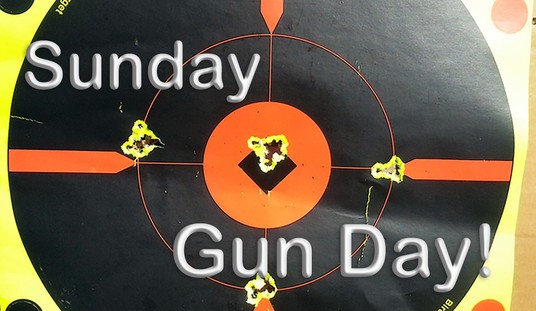It began as a trickle, then turned into a flood.
All those Hollywood actresses with harrowing stories of sexual abuse, harassment, and even rape rained down on the reputation of producer Harvey Weinstein, resulting in a picture of a monster.
It also set off a dizzying trend that was dubbed the #MeToo movement (something I’m told was actually started much sooner, but took a Hollywood twist to get the bright lights treatment).
It wasn’t just Weinstein, and it wasn’t just women.
Names like Kevin Spacey, Dustin Hoffman, James Franco, and Charlie Sheen were added to the ranks.
Men and children were victims, as well.
Heck… It wasn’t just Hollywood, as it appears business, media, and sports have been complicit in covering up abuses at the hands of the powerful over the vulnerable for far too long.
But back to Weinstein…
When the stories first hit the news and set the world on fire, Uma Thurman, the former model who starred in such Weinstein-produced hits as “Pulp Fiction” and “Kill Bill” volumes 1 and 2, was approached on the red carpet and asked for her reaction to the Weinstein revelations.
Thurman, seemingly seething, wasn’t ready to talk. She was too angry, but said she’d comment at a later time.
Well, it’s later.
Thurman sat with Maureen Dowd, of the New York Times, and explained the complicated history she has with Weinstein, as well as director Quentin Tarantino – and it’s not pretty.
To begin with, looking back to that red carpet moment, she says that the reason she didn’t comment then is not so much because she was angry, but because she was afraid she would cry.
Said Thurman:
“I used the word ‘anger’ but I was more worried about crying, to tell you the truth,” she says now. “I was not a groundbreaker on a story I knew to be true. So what you really saw was a person buying time.”
By Thanksgiving, Thurman had begun to unsheathe her Hattori Hanzo, Instagramming a screen shot of her “roaring rampage of revenge” monologue and wishing everyone a happy holiday, “(Except you Harvey, and all your wicked conspirators — I’m glad it’s going slowly — you don’t deserve a bullet) — stay tuned.”
OUCH.
She’s angry, alright, but she’s not just mad at Weinstein. She feels some guilt surrounding how everything went down. She’s upset that maybe she could have done something, or said something that could have made a difference.
She knew, but she didn’t break that code of silence that is now slipping away in Hollywood, and because she didn’t, she’s counting how many lives were damaged that may have been saved, had she had the courage to speak up.
“The complicated feeling I have about Harvey is how bad I feel about all the women that were attacked after I was,” she told me one recent night, looking anguished in her elegant apartment in River House on Manhattan’s East Side, as she vaped tobacco, sipped white wine and fed empty pizza boxes into the fireplace.
“I am one of the reasons that a young girl would walk into his room alone, the way I did. Quentin used Harvey as the executive producer of ‘Kill Bill,’ a movie that symbolizes female empowerment. And all these lambs walked into slaughter because they were convinced nobody rises to such a position who would do something illegal to you, but they do.”
Thurman stresses that Creative Artists Agency, her former agency, was connected to Weinstein’s predatory behavior. It has since issued a public apology. “I stand as both a person who was subjected to it and a person who was then also part of the cloud cover, so that’s a super weird split to have,” she says.
She goes on to tell a tale of a 16-year old Uma, just starting in the business, who was lured back to the apartment of an actor nearly 20 years her senior.
She doesn’t tell everything, but she tells enough.
She left that encounter broken, looking at her hands and feeling she’d been compliant. Her hands weren’t bloodied or bruised from fighting, but they should have been (she felt).
Weinstein’s behavior was just too much.
Thurman got to know Weinstein and his first wife, Eve, in the afterglow of “Pulp Fiction.” “I knew him pretty well before he attacked me,” she said. “He used to spend hours talking to me about material and complimenting my mind and validating me. It possibly made me overlook warning signs. This was my champion. I was never any kind of studio darling. He had a chokehold on the type of films and directors that were right for me.”
Things soon went off-kilter in a meeting in his Paris hotel room. “It went right over my head,” she says. They were arguing about a script when the bathrobe came out.
“I didn’t feel threatened,” she recalls. “I thought he was being super idiosyncratic, like this was your kooky, eccentric uncle.”
He then leads a leather-clad Thurman into a steam room. She objected then to being there, which caused Weinstein to bolt from the room, frustrated.
The first “attack,” she says, came not long after in Weinstein’s suite at the Savoy Hotel in London. “It was such a bat to the head. He pushed me down. He tried to shove himself on me. He tried to expose himself. He did all kinds of unpleasant things. But he didn’t actually put his back into it and force me. You’re like an animal wriggling away, like a lizard. I was doing anything I could to get the train back on the track. My track. Not his track.”
“The next day to her house arrived a 26-inch-wide vulgar bunch of roses,” Thurman says. “They were yellow. And I opened the note like it was a soiled diaper and it just said, ‘You have great instincts.’” Then, she says, Weinstein’s assistants started calling again to talk about projects.
The next encounter was at the Savoy Hotel in London. Thurman had her friend, makeup artist Ilona Herman, accompany her to meet Weinstein, in order to clear up any lingering bad feelings, and to further discuss future projects.
Thurman wanted to meet in the bar, but assistants, along with a phone call from Weinstein, convinced her to get on the elevator and go up, while Herman waited downstairs.
Once the assistants vanished, Thurman says, she warned Weinstein, “If you do what you did to me to other people you will lose your career, your reputation and your family, I promise you.” Her memory of the incident abruptly stops there.
Weinstein hasn’t disputed that part of the story, and when asked, even said the conversation was possible.
So what happened in that meeting?
Downstairs, Herman was getting nervous. “It seemed to take forever,” the friend told me. Finally, the elevator doors opened and Thurman walked out. “She was very disheveled and so upset and had this blank look,” Herman recalled. “Her eyes were crazy and she was totally out of control. I shoveled her into the taxi and we went home to my house. She was really shaking.” Herman said that when the actress was able to talk again, she revealed that Weinstein had threatened to derail her career.
Through a spokesperson, Weinstein denied ever threatening her prospects and said that he thought she was “a brilliant actress.” He acknowledged her account of the episodes but said that up until the Paris steam room, they had had “a flirtatious and fun working relationship.”
“Mr. Weinstein acknowledges making a pass at Ms. Thurman in England after misreading her signals in Paris,” the statement said. “He immediately apologized.”
She says she was tied up in the middle of a run of projects, but she kept her distance from him, considering him an “enemy” after that.
Good call.
So what about director Quentin Tarantino, who brought Weinstein on as producer of his projects with Thurman?
He noticed the tension at the 2001 Cannes Film Festival, and Thurman told him of the Savoy incident.
He apparently didn’t take it seriously.
Later, by the pool under the Cypress trees at the luxurious Hotel du Cap, Thurman recalls, Weinstein said he was hurt and surprised by her accusations. She then firmly reiterated what happened in London. “At some point, his eyes changed and he went from aggressive to ashamed,” she says, and he offered her an apology with many of the sentiments he would trot out about 16 years later when the walls caved in.
“I just walked away stunned, like ‘O.K., well there’s my half-assed apology,’” Thurman says.
Weinstein confirmed Friday that he apologized, an unusual admission from him, which spurred Thurman to wryly note, “His therapy must be working.”
Oh, yeah. Weinstein is supposedly getting therapy for whatever his “condition” is, that would lead him to subjugate and victimize so many women.
Did that incident lead to troubles with Tarantino?
It’s hard to say, but some of his behavior afterwards suggests that maybe he was.
For starters, there’s the blue car scene from “Kill Bill 2.”
As Thurman’s character, Beatrix Kiddo, was on the way to find her target, she flew down a Mexico road in a modified blue convertible.
She’d been told the car was safe, but the modifications that took it from a stick shift to an automatic made her feel unsafe. She didn’t want to drive it, and requested a stunt person.
Tarantino was having none of that.
“Quentin came in my trailer and didn’t like to hear no, like any director,” she says. “He was furious because I’d cost them a lot of time. But I was scared. He said: ‘I promise you the car is fine. It’s a straight piece of road.’” He persuaded her to do it, and instructed: “ ‘Hit 40 miles per hour or your hair won’t blow the right way and I’ll make you do it again.’ But that was a deathbox that I was in. The seat wasn’t screwed down properly. It was a sand road and it was not a straight road.” (Tarantino did not respond to requests for comment.)
She lost control and smashed into a palm tree. There was footage, shot from the back seat of the car, showing Thurman struggling to keep control of the car before the eventual crash, and it’s tough to watch.
She fought for 15 years to get that footage.
“The steering wheel was at my belly and my legs were jammed under me,” she says. “I felt this searing pain and thought, ‘Oh my God, I’m never going to walk again,’” she says. “When I came back from the hospital in a neck brace with my knees damaged and a large massive egg on my head and a concussion, I wanted to see the car and I was very upset. Quentin and I had an enormous fight, and I accused him of trying to kill me. And he was very angry at that, I guess understandably, because he didn’t feel he had tried to kill me.”
“Quentin finally atoned by giving it to me after 15 years, right?” she says. “Not that it matters now, with my permanently damaged neck and my screwed-up knees.”
That wasn’t everything. Tarantino apparently interjected himself into what was going on, onscreen, as well.
Thurman says that in “Kill Bill,” Tarantino had done the honors with some of the sadistic flourishes himself, spitting in her face in the scene where Michael Madsen is seen on screen doing it and choking her with a chain in the scene where a teenager named Gogo is on screen doing it.
“Harvey assaulted me but that didn’t kill me,” she says. “What really got me about the crash was that it was a cheap shot. I had been through so many rings of fire by that point. I had really always felt a connection to the greater good in my work with Quentin and most of what I allowed to happen to me and what I participated in was kind of like a horrible mud wrestle with a very angry brother. But at least I had some say, you know?” She says she didn’t feel disempowered by any of it. Until the crash.
You can take that comment about crashing several ways, not the least of which involves Hollywood’s elite and their dirty secrets.













Join the conversation as a VIP Member